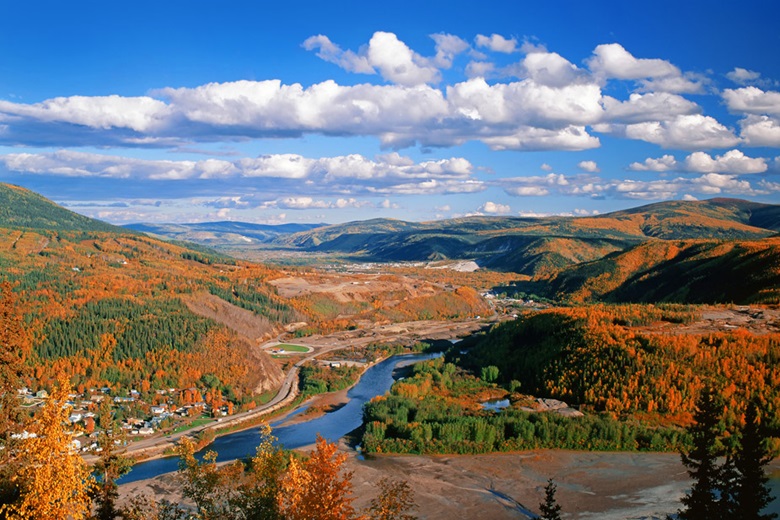Remote Areas are Full of Potential

The wilderness is an economic success story in waiting
In the dry, dusty middle of Australia, thousands of tourists flock to Birdsville’s annual horse races. The historic event, dating back to 1882, draws international media coverage, allowing the town to epitomise the Australian Outback. The races receive government funding and substantially boost the local economy, with the tourists travelling onto a nearby national park.
Birdsville, more than 1,000 kilometres from the nearest major city, has successfully developed its unique event and has overcome its remote location to tap an economic opportunity.
[Infographic: The Potential of Remote Areas]
From Australia’s desert towns to Papua New Guinea’s tropical highlands and Canada’s icy wilderness, the Asia-Pacific region’s remote areas face many challenges to economic development. Disconnected by distance, terrain or travel time, they often lack infrastructure and access to basic health, education and other services. Residents suffer hardships from high living costs and limited job opportunities.
But many of these areas have also realised their economic potential and have integrated into the wider economy, a new report by APEC’s research arm says. Some have tapped into natural resources and developed into cities with diverse industries. Others have benefited from their location or unique heritage through tourism development.
“All of our cities were once remote areas,” said Emmanuel A. San Andres, an analyst at APEC’s Policy Support Unit and lead author of the report.
“With good exploration of the economic potential, along with deliberate and sustainable policies, remote areas can become connected and integrated,” he said.
Regional cooperation can also play a key role, explains the report, Development and Integration of Remote Areas in the APEC Region. APEC’s diverse levels of development and geography provide ideal ground for sharing lessons and experiences in addressing the challenges and mitigating environmental and other risks of remote area development.
APEC’s working groups have already tackled some of the core issues holding back remote areas, such as digital connectivity, energy services, tourism and emergency preparedness.
APEC can continue to help member economies, by sharing knowledge and initiating discussions on policies and approaches to make remote areas self-reliant. The regional body can develop and share toolkits and checklists to help economies identify and study high-potential economic growth areas and priority infrastructure investments.
“Some success stories were historical accidents but others were the result of good and deliberate policy. Member economies can share those experiences,” Mr San Andres said.
Along with tourism or extracting natural resources, some remote areas have tapped into their unique location to attract investment, including from the media industry. A successful example is the filming of The Lords of the Rings trilogy in remote New Zealand mountains and plains, which are now major tourist destinations. New Zealand has recorded a 50 per cent increase in inbound tourism since the films were released.
Special Economic Zones (SEZs) have also been established in some remote areas, including those in strategic locations. With special tax breaks, regulations and infrastructure support, SEZs can attract foreign investment and develop manufacturing, agriculture or other sectors. One of China’s most successful examples is Shenzhen, a megacity on the Pearl River Delta close to Hong Kong, China. Once a fishing village, it is today one of China’s most productive cities and home to ICT giants. Over the years, population and GDP per capita have exploded.
Addressing the challenges facing remote areas, especially transport and digital connectivity, is critical. Government funding and public-private partnerships are key. Better rail and road infrastructure reduce logistics and travel costs, attract business, create employment and can connect areas to local supply and global value chains.
In Western Australia, freight transport networks are being expanded so remote mining, farming and other communities can move their goods quicker, cheaper and more easily to market. Consequently, exports from Western Australia’s ports are expected to increase by more than 100 per cent by 2030. At the other end of the APEC region, tourism in Canada’s northwestern Yukon territory grew after completion of the Alaska Highway that joins Alaska to continental USA.
ICT is vital to connect remote areas to the wider economy, as well as to enhance health, education, financial and other services. In areas lacking sophisticated internet infrastructure, simple mobile phones are an affordable way of exchanging knowledge. In Papua New Guinea, stories and daily lesson plans were sent by SMS to some remote schools. Schools taking part in the initiative reported a 50 per cent increase in children’s ability to read English, compared to those schools not taking part.
Managing and mitigating environmental and other risks of developing and integrating remote areas are also key, the report says. Economic activities should be environmentally sustainable and well regulated, and efforts made to strengthen governance. All stakeholders must also have engagement and ownership of any development plans.
“Not every remote area will become an integrated, economic success story. But there are plenty that have. To determine this requires a coherent policy approach, a rigorous feasibility study, and communication and buy-ins from stakeholders,” Mr San Andres said.

